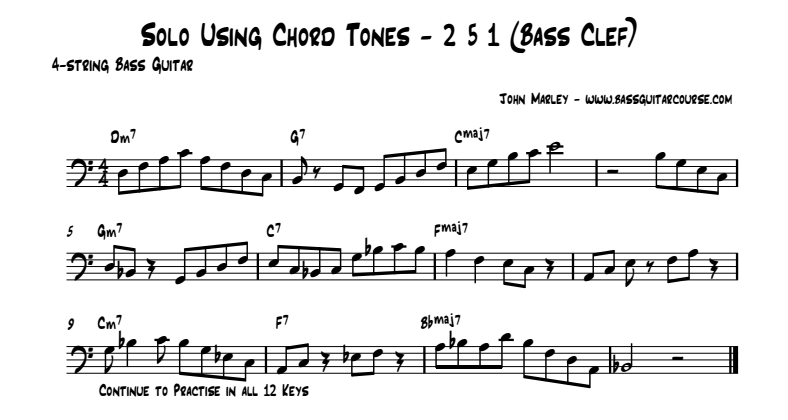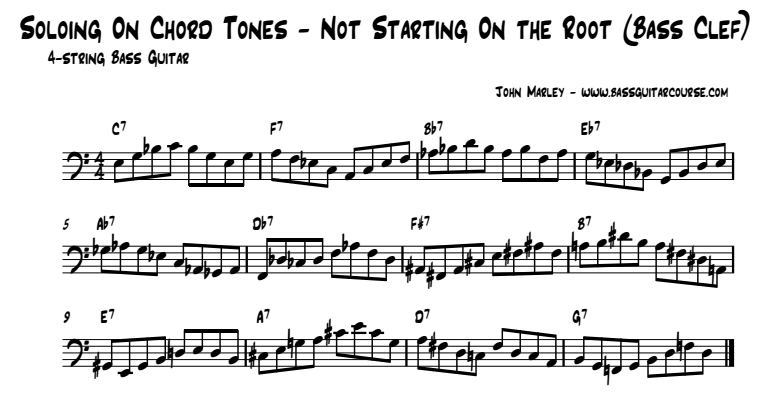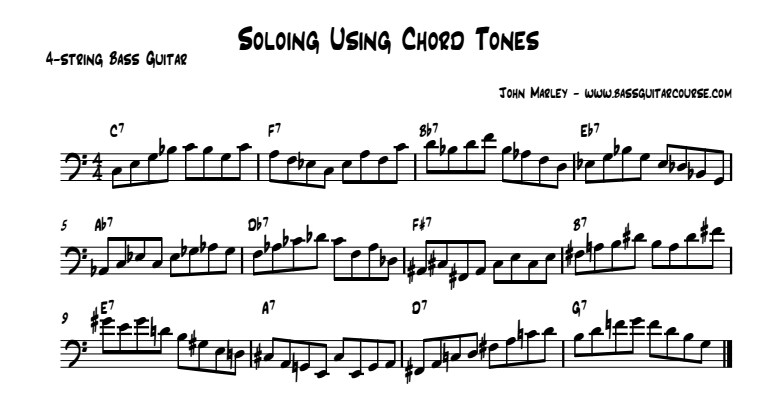So far in this Jazz Bass series, we have looked at constructing bass lines and soloing using a number of ideas including major 2-5-1 progressions & minor 2-5-1 lines and diminished scale patterns. If there is one thing we need to have a firm grasp of when playing a solo, it’s using chord tones.
If you have played jazz gigs in the past, you’ll be familiar with the situation where it’s bass solo time and suddenly everyone stops playing. This gives us no harmonic backdrop to work against and it harks back to a time when the double bass was hard to amplify so the other musicians would bring the volume down.
In the days of modern amplification, this is no longer necessary so you should ask your fellow musicians to continue to comp you as they would any other instrumental soloist. However, we still need to be able to clearly outline the harmony in our solos. By playing chord tones (the notes which make the chord), we will be clearly stating the harmonic content of the piece. Practice soloing on several jazz chord sequences using nothing but chord tones.
I have included 3 examples PDF’s below. The second one avoids starting each new chord with the root note. As bassists, we are used to playing the root most of the time but we can move away from this in our solo’s. This will allow more melodic freedom. I have chosen not to include tab with the exercises as the emphasis needs to be on knowing the notes that make up each chord.

- Being a Working Musician Part 2: Pop Function Gigs - November 22, 2016
- Being a Working Musician Pt. 1: A Day in the Life of a Working Bass Player - August 30, 2016
- Soloing on Bass Guitar: Soloing Using ‘Continuous Chord Tones’ - May 17, 2016


Leave a Reply